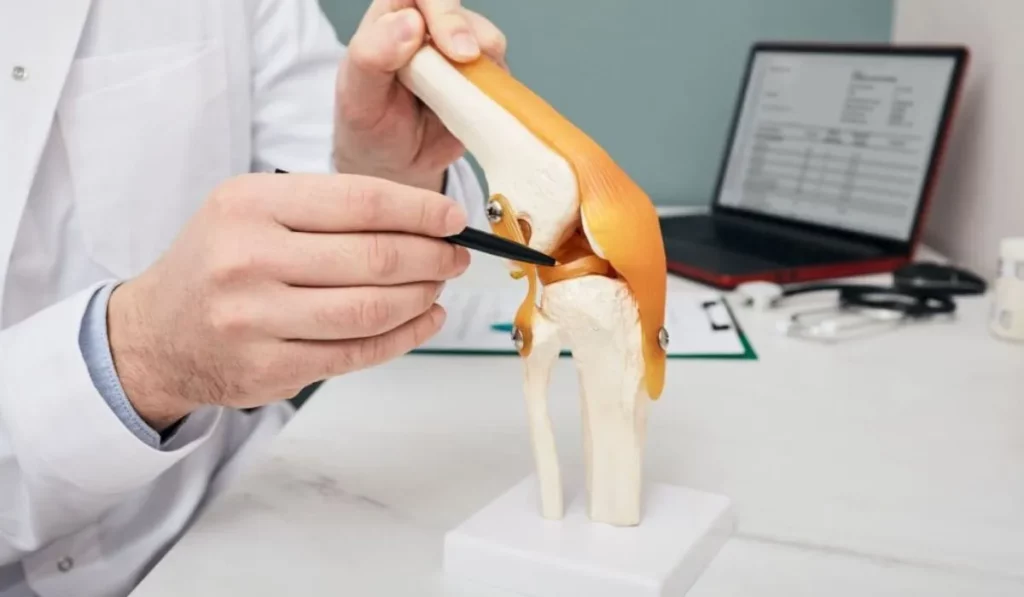For knee pain or joint problems, we usually have several treatment options. Two of the most popular procedures we’re often asked about by our patients in Los Angeles, CA, are cartilage transplants and knee replacements. If you’re curious about what could work best for you or a friend, we can help explain your options. In this article, we’re going to compare knee cartilage with knee replacement and find out how effective knee cartilage transplants can be. In the end, you will know more about these therapies and feel more empowered to choose them wisely.
Understanding Knee Cartilage
Before getting specific about knee cartilage transplantation and knee relief, let’s learn about knee cartilage first. Cartilage is a hard but flexible towel covering the ends of your bones, making for a disunion-free trip in your joints. Cartilage does an inconceivable job of padding and reducing disunion in the knee joint.

Knee-Relief Surgery
It’s a prevalent procedure for people who have significant damage to the knee joint, either due to a traumatic injury or as a result of wear and tear and swelling (arthritis) in their knees. In this process, the worn-out corridor of the knee joint is removed and replaced with synthetic particulars made from essence and plastic. It’s an effective system for reducing chronic pain and adding the capability to move, but it’s a big surgical operation involving significant rehabilitation.
Cartilage Transplant What’s It?
A cartilage transplant, in discrepancy, is a surgical procedure aimed at repairing damaged knee cartilage. Compared with knee relief, it’s a low-threat, minimum procedure. In a cartilage graft, a healthy cartilage towel is taken from an area of the knee that isn’t critical (lower weight-bearing) or from a patient and implanted into the problem area. The end is to stimulate the conformation of new cartilage and ameliorate common function.
Cartilage Transplant Procedure
Step 1: Evaluation
Before undergoing a cartilage transplant, your orthopedic surgeon will evaluate the extent of cartilage damage and whether you’re a suitable candidate.
Step 2: Harvesting Cartilage
If you’re a candidate, the surgeon will harvest healthy cartilage tissue, usually from a non-weight-bearing area of the knee.
Step 3: Implantation
The harvested cartilage is then implanted into the damaged area of the knee joint using specialized techniques.
Step 4: Recovery
Recovery from a cartilage transplant is typically faster than a knee replacement, with less pain and reduced downtime.
Comparison Between Knee Replacement And Cartilage Transplant
To decide what’s best, you need to know about yourself—your conditions and situations. Knee replacement is typically indicated for extreme osteoarthritis, and cartilage transplantation is ideal for people with single-focal cartilage loss. It is like deciding to rebuild the entire house (knee replacement) or just fix one room (cartilage transplant).
Recovery And Rehabilitation
Rehab is essential following knee replacement and cartilage transplant surgery. Physical therapy is important to recover the power and flexibility of your knee. As previously discussed, a cartilage transplant recovery timeline is, generally speaking, shorter and more manageable than that of knee replacement surgery.
Read More:- Ankle Sprains In Athletes: Recovery Guidelines
Knee Cartilage Transplant Success Rate
Now, let’s address a significant concern: knee articular cartilage graft survival rate. The surgical outcome hinges on multiple elements, such as the patient’s age, depth of cartilage damage, and post-operative care. Knee cartilage transplant success rates vary between 75 and 85 percent of the time, which can make this procedure an appropriate solution for most people seeking relief from knee pain.
Is A Cartilage Transplant The Right Choice For You?
In conclusion, a choice for a costal cartilage transplant or knee replacement should be made under the advice of your orthopedic surgeon. Factors such as your age, physical fitness, knee condition, and extent Speaking with your doctor about what will work for you is the key to selecting the best method for you and your desired outcome.
Read More:- Aquatic Therapy For Injured Athletes – Effectiveness Of Aquatic Therapy
Conclusion
In conclusion, both cartilage transplants and knee reserves are precious treatments for knee problems, but they serve different purposes. Knee relief is a more significant procedure, frequently used for severe arthritis cases, while cartilage transplants are geared toward repairing insulated cartilage damage. The success rate of a cartilage transplant is promising, making it a feasible option for numerous individuals. To make the right choice for your knee health, consult with your healthcare provider and review your options completely.
FAQs
Q1: Can A Cartilage Transplant Help The Need For Knee Relief?
Yes, in some cases, a successful cartilage transplant can delay or indeed help the need for knee relief. It depends on the extent of damage and the case’s response to the procedure.
Q2: Is A Cartilage Transplant Less Painful Than Knee Relief?
Generally, yes. Cartilage transplant procedures are less invasive and generally cause lower pain during recovery compared to knee reserves.
Q3: How Long Does It Take To Recover From A Cartilage Transplant?
Recovery time can vary, but it’s generally shorter than recovery from knee pain. Cases frequently renew light conditioning within many weeks and further emphatic conditioning within many months.
Q4: What Are The Pitfalls Associated With Cartilage Transplants?
Common pitfalls include infection, bleeding, and failure of the scattered cartilage to integrate properly. Your surgeon will discuss these pitfalls with you before the procedure.
Q5: Are There Age Restrictions For Cartilage Transplant Surgery?
While there are no strict age restrictions, the success of the procedure may be determined by a patient’s age and overall health. Your surgeon will estimate your circumstances to determine felicity.
In conclusion, whether you decide on a cartilage transplant or knee relief, the thing is the same: better knee function and reduced pain. Both procedures have their merits, and the choice should be grounded in your unique situation and medical advice. Always consult with a good healthcare professional to explore your options completely.